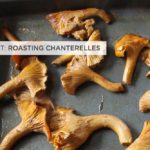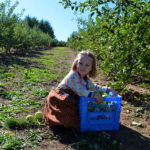Ginkgos are dioecious, which means they can be either male or female trees. Typically it can take somewhere around twenty years to find out the gender of your ginkgo biloba. The primary difference is that female trees provide fruit in the Fall. This is not as welcome of a gift to many as it may sound.
The fruits of a ginkgo can be prolific, small, round, translucent balls. They are soft when ripe, like a plum. The issue with the fruit is it’s odor – somewhere between a cross with moldy cheese, rancid butter and dog poop. Seriously, if you have never smelled the fruit it’s definitely a memorable experience.
My opinion is that the trees are lovely enough to suffer through a couple weeks of a rank smell. My opinion has further improved when I recently learned there are edible nuts inside the fruit! Being the brave girl I am, I crouched under a fruiting tree I had noticed on campus. I tried to breath through my mouth and not my nose, which helped to ignore the smell. Focusing on the softest fallen fruit, I squeezed the nuts out of the fruit on site and deposited into a plastic bag.
Once home, I rinsed any remaining pulp off the nuts in the sink. I then toasted them for a couple minutes, to dry them out thoroughly. Then I grabbed a hammer and gently tapped the outside shell until it split along the seams. The outer shells were pretty easy to remove, although peeling the thin membrane around the nut took a bit longer (just as hazelnuts have that thin husk around the nut, so do ginkgos).
The nuts are highly nutritious, very fibrous and look similar to a large green pea. You can toast then for a snack or eat them raw. I have heard of people mixing them into stir-fry, rice bowls, etc. They are high in both Vitamins A and C. The nutritional data I found online lists the contents from canned ginkgo nuts, which I would assume contains salt and therefore raised the sodium content in their listing.
I have been interested in wild foods for awhile and I guess you could consider ginkgo nuts a form of wild food in our urban areas, as they are often lining streets or filling neighborhood parks. So keep your noses peeled for some rank odors out there and take advantage of the nuts while they are out there falling!










 This cluster was about the siz
This cluster was about the siz




 I start with a
I start with a


Very cool, I didn’t know ginkgo did that.
that is way cool info – thanks for sharing, i’d been wondering about gingkos for a while!
Did they taste good?
Hey Nay-nay…you are sure right with the smell. We have 2 next door and we refer to them as “Stinko-Ginko”. It would be nice if the stink only lasted a couple of weeks! Come visit my shop with your family if you come up for Turkey Day! Miss ya….Mama T